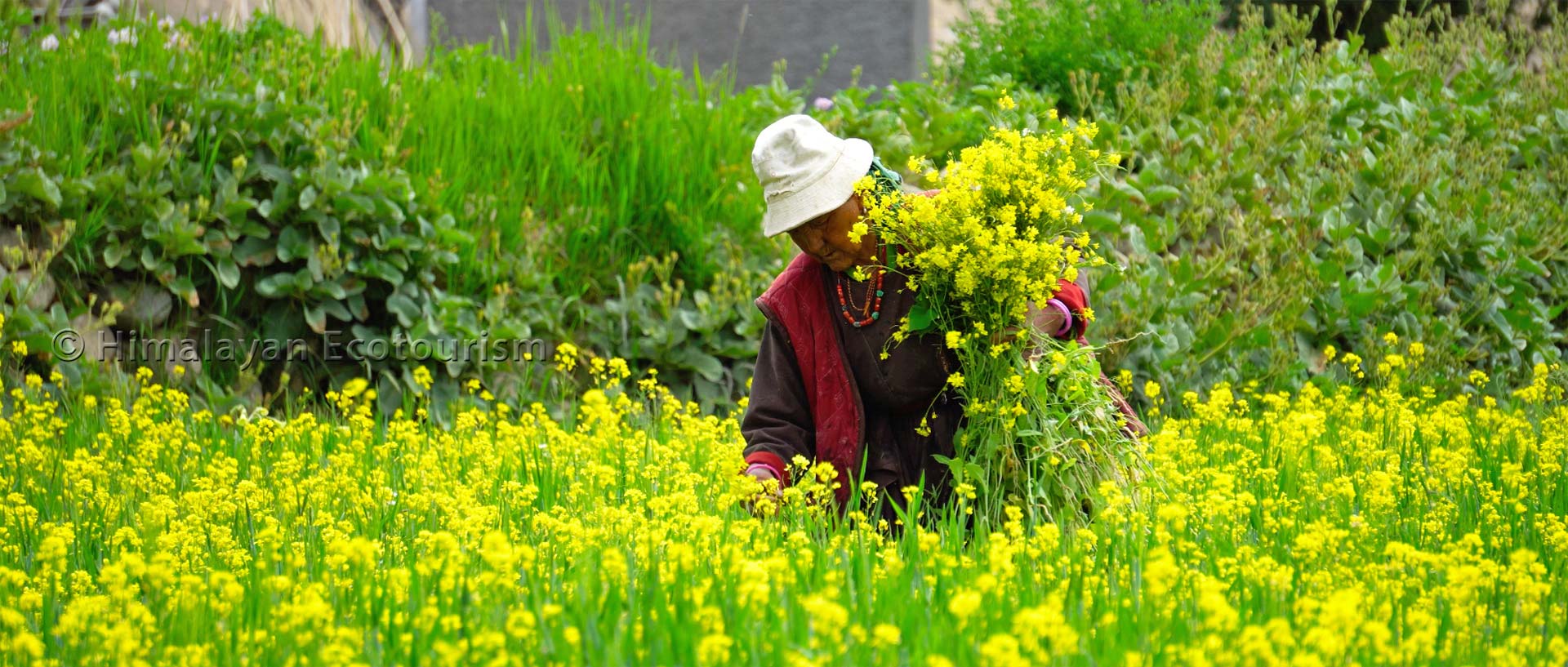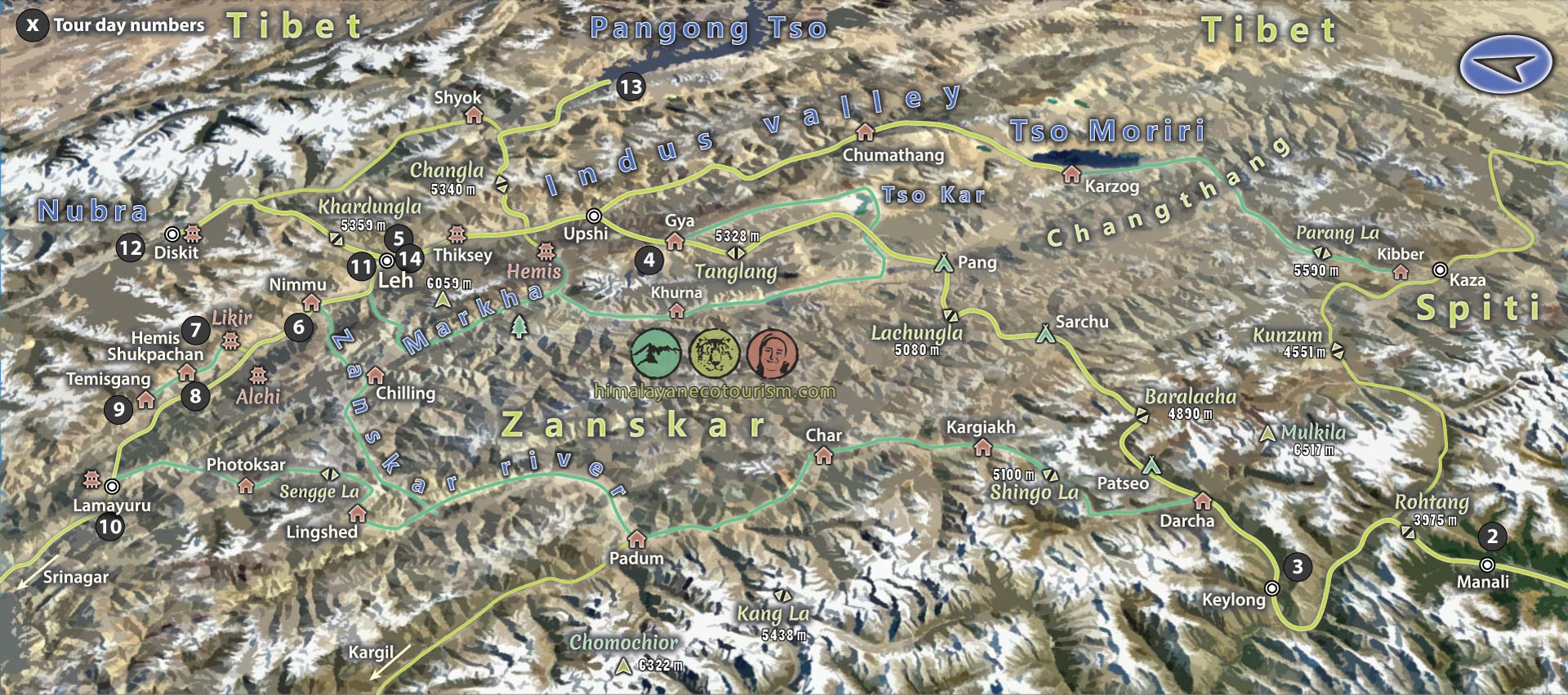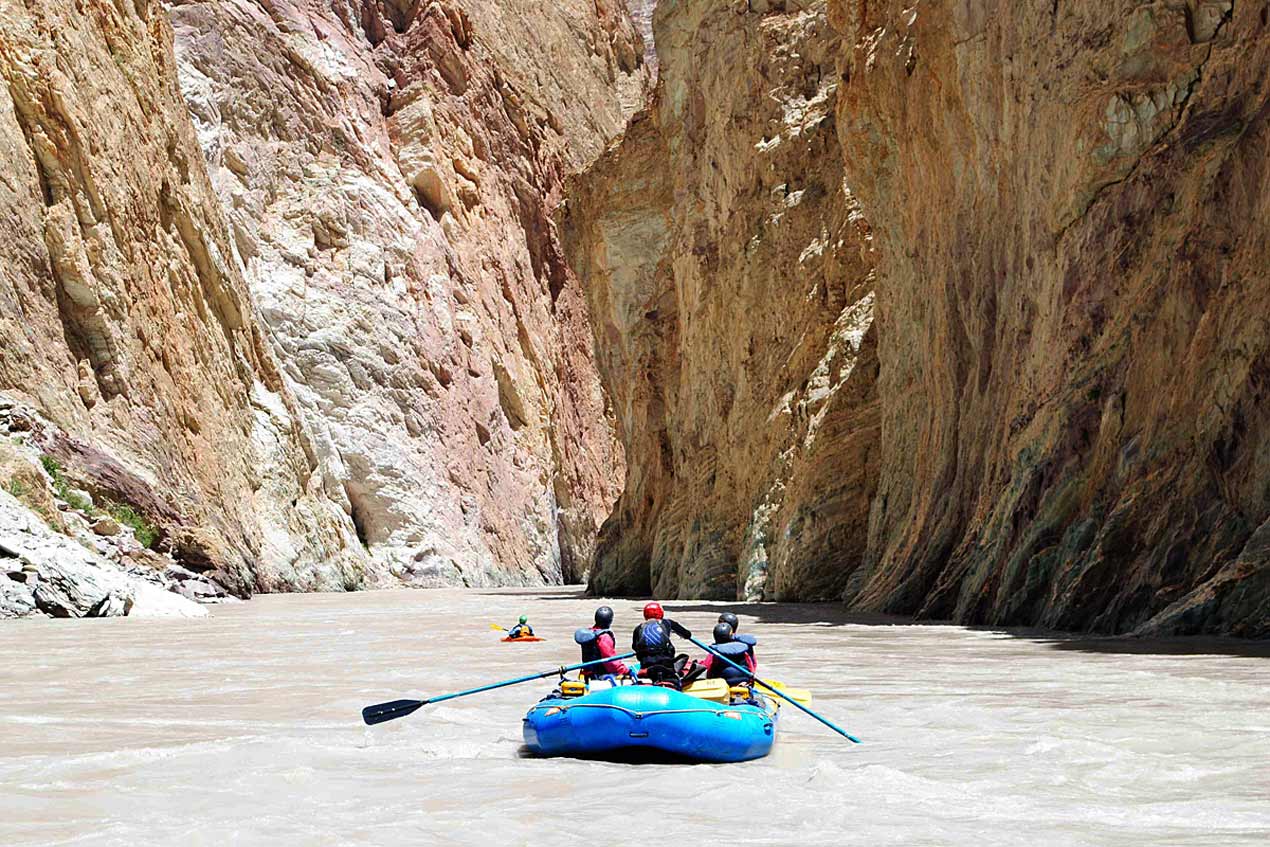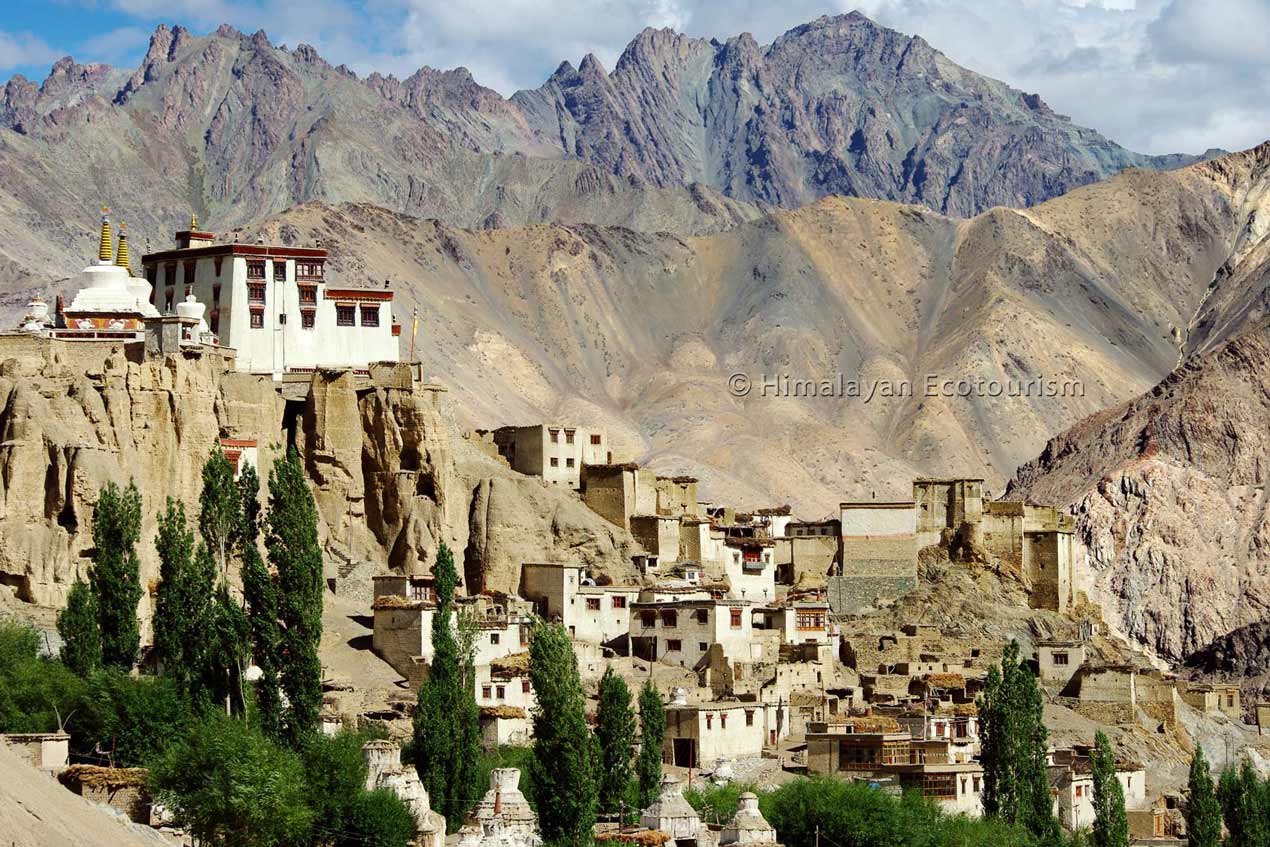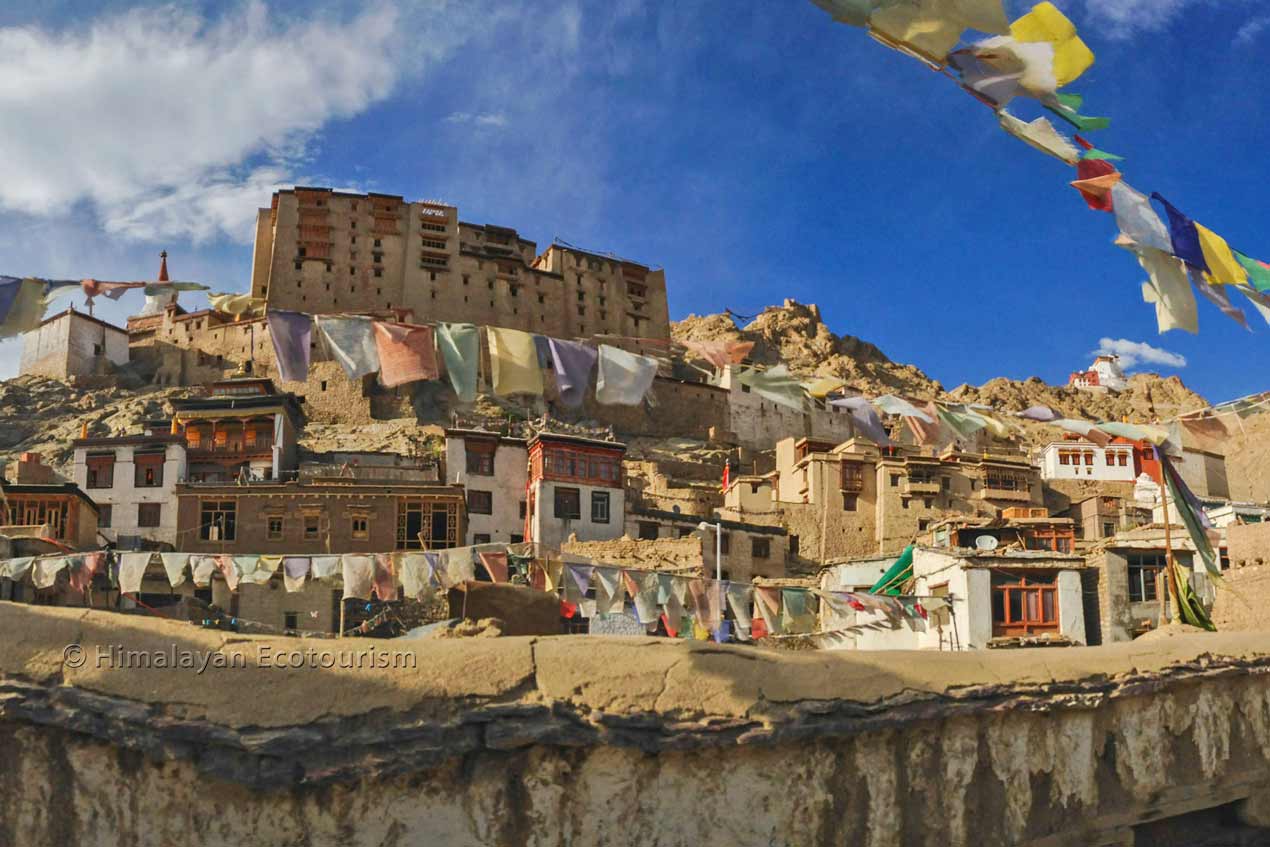Experiential Travel in Ladakh
This Ladakh travel itinerary has been specially designed for those who understand travel as a discovery, an experience of places and people, immersing in nature and culture.
The pandemic has changed many things in international tourism, and Ladakh is no exception. The bulk of tourism-related income has swung to the wealthier regions, depriving the villagers in poorer regions of Ladakh to earn their daily bread and butter.
With Himalayan Ecotourism, a travel organization that has won multiple international awards for responsible tourism, you are sure to contribute to the fair development of tourism. We not only provide you the opportunity to experience a new landscape and culture but also ensure that this service provides an opportunity for the locals to have a better income.
The itinerary for the “experential tour” has been curated to make you enjoy the real Ladakh, in the current context. Ladakh is majestic, but is not an easy place to live when you are a simple villager. This trip will give you the chance to be a part of the local lifestyle and immerse yourself in the culture.
Come on, let’s go!

Experiential journey in Ladakh : itinerary
Day 1
Flight to Delhi
You arrive by flight at Delhi airport. Your guide welcomes you and takes you to your hotel for your first night in India.
Day 2
Sight-seeing at Delhi
Let’s start the day as soon as you are well rested. We will decide together the program of the day according to your condition and the weather of the day. If the weather is nice we can walk through the colorful streets of old Delhi. Alternatively, we can take a city tour by car or visit the National Museum.
Lodhi garden
Day 3
Manali
We take the train relatively early today. In fact, we will have breakfast on the train. This will allow us to advance towards the Himalayas without wasting time, and also, you will be able to experience the pleasure of traveling by train in the plains of North India.
We get off the train in Chandigarh, from where we continue by private vehicle. We will have lunch just before starting to climb the first foothills of the Himalayas. This first crossing of the Himalayas will take us the rest of the day.
We arrive in Manali in the evening going up the beautiful valley of the Beas. We will be
Day 4
Jispa
By spending a night at 2000 m, your body has started acclimatizing to the altitude without you even realizing it. We will continue our ascent today. We will climb 1200 m in just two hours by car. Indeed, we are entering the highest parts of the Himalayas. North of Manali is the dividing line between areas which are under the influence of the monsoon and those which are not. Recently, a tunnel (Atal tunnel) of 9 km was built to cross the chain of mountains which constitutes this line of separation. If it was raining on the Manali side, dry weather awaits you at the exit of the tunnel. Welcome to the high Himalayas!
We then go up the Bhaga valley to Jispa at 3200 m. We will stay in the calm atmosphere surrouding Jispa, near the river to observe the big mountains all around us.
Day 5
Leh – Ladakh
We will finally arrive in Ladakh today. The road will be long, but much better, because it is one of the most beautiful and impressive roads in the world! We pass our first pass (Baralacha La) at 4890 m. The passage of Baralacha immerses us in a new universe, a mineral universe, that of Zanskar, where the vegetation hardly exists any more, a desert at more than 4000 m of altitude. We officially enter into Ladakh at Sarchu in the Tsarap Valley.
Then, we climb to the second pass through the Gata Loops, a good twenty hairpin bends. At Lachung La, we pass the 5000 m mark. We go down to the military post of Pang, where nomadic families have set up local dhabas to eat and drink chai during the peak season.
After Pang, it’s real happiness for the eyes. We cross the Moore plateau which gives us the impression of revolving around the Tibetan plateau. In fact, we are there, but on the Indian side of the plateau. We then climb to the last pass of the day, Tanglang La at 5328 m. Do not worry if you have unpleasant symptoms of altitude sickness, we are equipped with oxygen kits to enable you to cross the passes without struggling for breath. The descent from Tanglang is fast. We finally arrive at the first village of Ladakh (Rumtse). We will make a stop for Chai in Lato where the Hemis National Park begins. We then see the magnificent mountains with a strata of purple color. On arrival in the Indus Valley, it will probably be dark because we had a very long driving day.
On arrival in Leh, meals and rest at the hotel.
Day 6
Nimmu – Rafting in the Zanskar waters
As the sun rises over the capital of Ladakh, you will have before your eyes the fantastic landscape of the Indus Valley. You would be acclimatized by now, but to be on the safer side, we’re going to descend a little so your body feels better. Zanskar is a confluence of the Indus which, as its name suggests, flows from the Zanskar massif. She has carved gorges through the very visible lines of strata in the valley. Rafting in these waters is a unique experience!
The end of the Himalayan river descent takes place near Nimmu at the confluence of the Zanskar and the Indus. We will then settle comfortably in an old Ladakhi house transformed into a hotel.
Day 7
Alchi and Likir
Immerse into Buddhist culture today, with the visit of two famous monasteries built in the tradition of Tibetan Buddhism and which are very important religious centers. The monasteries of Ladakh are in fact true institutions of the practice and teaching of Tibetan Buddhism. In the larger monasteries we even find many children who receive the teachings and who will become monks. We will first visit the monastery of Likir, located on a rocky promontory in an impressive valley whose bottom has been converted into a real oasis thanks to a clever irrigation network. You will have the pleasure of tasting all this with your eyes from the top of the monastery displaying a magnificent statue of the future Buddha, the Maitreya.
Then we will go to Alchi monastery, over a thousand years old, to admire its magnificent murals. We will stay in a small hotel in the village of Alchi.
Day 8
Tar Village
Today you will realize why we have called this itinerary “Experential Travel”. A short drive takes us to a small bridge that allows pedestrians to cross the Indus. For us, it will be the start of a hike to the village of Tar in the Zanskar massif. The walk is not complicated and the path runs along a small river. We will have a total of 400 m of unevenness. Quite manageable, especially since we are now perfectly acclimatized.
Upon arrival in the village, you will be hosted by a local family. The houses only have one or two bedrooms for guests, so everyone in the group won’t be accommodated in the same place. With the warm hospitality of your hosts, you will discover their way of life and you can even take part in activities such as helping to cook meals. An upclose interaction with village lifestyle and cultural immersion. On the other hand, do not expect material comfort, there is simply none. Your room will be very simple, without toilet. In this regard, you will have to use the traditional dry toilets. Your guide will explain all the details. You will not take a bath during this short stay in the village.
You can end the day with a short walk in the village or a visit to the monastery located at the top of the village.
Day 9
Tar Village
Julley !
You are now ready for a full day in the village. The goal of the Day: complete immersion in the Ladakhi culture. You will follow your family during the Day to participate in all the household chores, from working in the vegetable garden, to preparing meals, including the barn and the care of the animals.
Know that the village of Tar benefits from the support of Hilmalayan Ecotourism to help the inhabitants to improve their tourism based income, while avoiding the harmful impacts of uncontrolled tourism that is destroying local cultures. Moreover, we have already been decorated with several international awards for the kind of work we do in the field of responsible tourism.
Day 10
Lamayuru
We will descend from the village of Tar after breakfast. The walk is pleasant, you will even find wild lavender from the Himalayas!
Once we reach the roadhead, we leave for a short trip to Lamayuru where there is one of the oldest monasteries in Ladakh. Lamayuru is located in a completely incredible natural setting. Some geological strata have been eroded in such a way that it looks like you are on the moon and so the place is known as “Moonland”.
We have lunch at the guest house where we will be staying tonight. We will visit the monastery in the afternoon and end the day at the guest house.
Day 11
Leh
We have a bit of a transportation this morning to return to Leh. We have seen the west of Ladakh, we can now head east, higher, more Tibetan influence, in a completely different atmosphere. We will have lunch in Leh and take advantage of the afternoon to visit the city.
Together we will decide what we do. It can just be free time to give yourself time to wander around the Tibetan markets. Otherwise, we recommend visiting the Shanti Stupa, the Leh Palace, or the very beautiful Namgyal Tsemo Gompa.
Day 12
Nubra Valley – Khardungla Pass
We are going to rediscover the pleasures of the high Ladakhi passes. From Leh, it is a direct climb to the Khardungla pass at 5360 m altitude. From the pass, we can see the distant peaks of the Karakoram range, with the second highest peak in the world, K2. Not that far, in fact, the Khardungla pass leads into the Nubra valley which itself “flows” from the Karakoram massif.
The place is absolutely magnificent, with a wide valley, a river that meanders on its very wide bed between huge mountains. But the place is also strategic, with Pakistani bordering the West and China to the East. The Nubra flows from a glacier, the Siachen, infamous for being the highest battlefield in the world where Indian and Pakistani armies show off their big muscles.
Arriving in the valley, we will stop for a break in Diskit, before continuing to our Hotel in Hunder. In the evening, if you feel like it, we will go for a camel ride in the surrounding sand dunes. And yes, glacial erosion is the origin of these sands and camels have resided there, probably since the time of the ancient Silk Route which passes through the Nubra Valley.
Day 13
Pangong Tso Lake
Today, we continue our journey eastward to almost reach the border with Tibet. The journey is through the Shyok Valley through a landscape that is now familiar to us: arid mountains, deep blue sky, wild rivers on a bed of stones. The pattern repeats itself up to the edge of Pangong Tso Lake at an altitude of 4250 m.
A huge water body will appear before you all of a sudden! The lake Pangong Tso is about 150 km long. With its deep blue sky-like waters, the lake is a perfect reflection of the sky and leaves only a thin strip of arid and mountainous land to make the strange connection between the top and the bottom. Pangong Tso is also a nature reserve with dozens of rare bird species that live there during different seasons of the year except in winter when the lake freezes. Only a few inhabitants remain in the small village of Spangmik. We will stay near the lake to enjoy this exceptional atmosphere.
Let’s prepare well for a cold night, despite the season, temperatures can drop to sub-zero.
Day 14
Thaktok and Chemrey Monastery
We take the time to enjoy the lake this morning, as the colors keep changing with the sun rising above Tibet.
Then, we take the road again to cross the Changla Pass which allows us to reach the Indus Valley again. We descend from the pass and we stop at the village of Sakti, well located next to the monastery of Thaktok. We will visit the village and also the monastery, some parts of which were built in natural cavities of the mountain. If the weather permits, and if you feel like it, we can also visit the monastery of Chemrey.
Overnight in a very nice little hotel.
Day 15
Monasteries of Hemis and Thiksey
For our last day in Ladakh, we have two cultural pearls left: the monasteries of Hemis and Thiksey. We first cross the Indus to arrive in the mountains of Hemis National Park. Quickly, between steep mountain walls, we discover the largest monastery in Ladakh. Take the time to stroll around the monastery, you can also visit its small museum.
We leave the monastery for lunch which we will take on the way. We stop in a small local restaurant to eat probably our last momo dish 🙂 Then we continue our journey to Leh. On the way, we discover the magnificent monastery of Thiksey. A real postcard! We will also visit it, especially for the view it offers over the Indus Valley, for its special atmosphere and also for its huge Maitreya Buddha built inside and which is 3 stories high.
Then we end the tour in Leh. We will still have some free time for souvenirs, then we will eat together in town.
Day 16
Flights : Leh – Delhi – Home
Transfer to Leh airport for your flight to Delhi. End of our services.

JAN
Avoid
FEB
Avoid
MAR
Avoid
APR
Avoid
MAY
You may go
JUN
Good to go
JUL
Best time to go
AUG
Best time to go
SEP
Best time to go
OCT
Good to go
NOV
Avoid
DEC
Avoid
Itinerary
Flight to Delhi
Sight-seeing at Delhi
Manali
Jispa
Leh - Ladakh
Nimmu - Rafting in the Zanskar waters
Alchi and Likir
Tar Village
Tar Village
Lamayuru
Leh
Nubra Valley - Khardungla Pass
Pangong Tso Lake
Thaktok and Chemrey Monastery
Monasteries of Hemis and Thiksey
Flights : Leh - Delhi - Home
Gallery
Photos of Ladakh
Share your feedback
Thank you for sharing your experience! Your feedback is invaluable and inspires fellow travelers to choose responsible tourism when they journey with us.





